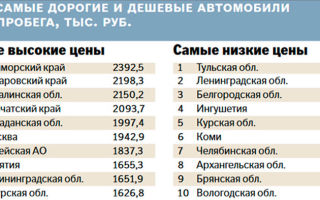What kind of oil to pour into an automatic transmission
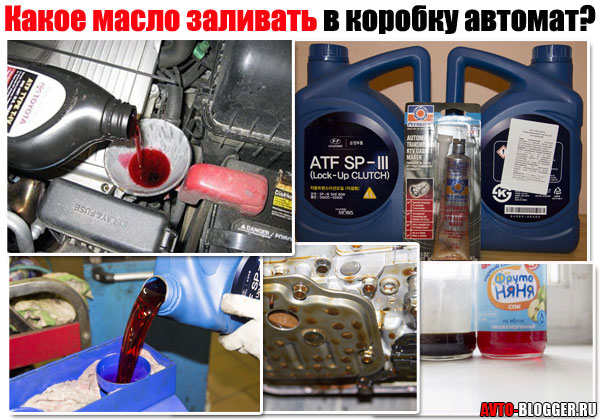
What kind of oil is best to pour into an automatic transmission? It is also transmission fluid, it is also ATF (automatic transmission fluid).
The automatic transmission emergency service advises:
Only pour oil into the automatic transmission that is recommended by the manufacturer.
It is not for nothing that he recommends automatic transmission oil with certain characteristics, because the latter take into account an immense number of parameters, from operating temperature conditions to the specific properties of the materials used in the manufacture of the gearbox.
Question one: fill the automatic transmission with oil recommended by the manufacturer of what?
A car manufacturer, an automatic transmission manufacturer or an automatic transmission oil manufacturer? Having purchased a car, we deal only with a dealer representing its manufacturer. Actually, he dictates the will of the automobile concern to us.
Question two: whose interests are protected by the manufacturer’s recommendations? Consumer interests?
The third, leading question: which car manufacturer makes what is poured into the automatic transmission?
Automatic transmissions are produced, for example, by Mercedes, Peugeot, Citroen, Renault... What about automatic transmission oil? We don't have such information. But there are hundreds of companies that are involved in blending (mixing/producing oils): Fuchs, Mobil, Pentosin, Petro-Canada... Simply put, they mix base oils for automatic transmissions with additive packages to give the final product certain properties.
Properties are a topic for another discussion.
We only note that, despite the incredible number of manufacturers of both cars and automatic transmissions, today the “oil” that is poured into an automatic transmission can be classified as one of five main types, starting with group A of the 1954 standard and ending with Dexron VI.
Between them are DII, DIII and DIV+. These are developments by GM. If you look at these same products through the eyes of Ford, they will be called Mercon. Differences can be found - and first of all, this is the different kinematic viscosity of the oil for the automatic transmission - but the essence remains the same.
However, let's return to the ability to maneuver and consider a specific example.
Mercedes car, seven-speed automatic transmission (722.9). How do you know what kind of oil to put in the box? We call the dealer. Dealer response: A 001 989 6803 13. Tolerance 236.14. Price per liter from 900 rub./liter to 1,200 rub./liter. Depending on the greed of the dealer. Only pour this kind of oil into the automatic transmission, otherwise the car may fail, the warranty will expire, and so on and so forth.
Source: https://www.akpp03.ru/info/poleznye-stati/kakoe-maslo-zalivat-v-avtomaticheskuyu-korobku-peredach
What kind of oil should I put in the automatic transmission? We will analyze TOYOTA, NISSAN, VOLKSWAGEN, CHEVROLET and many others
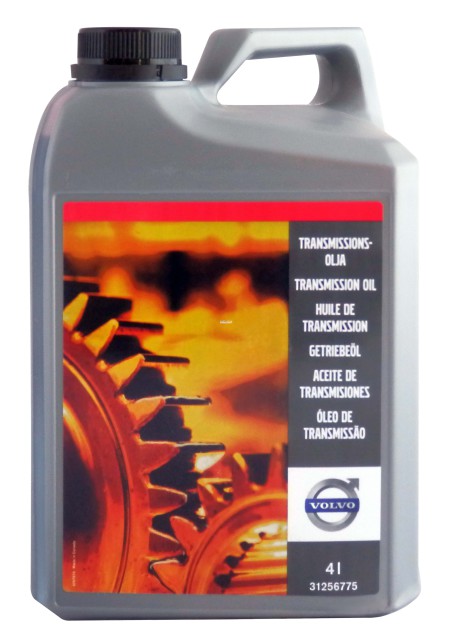
Today I want to talk about automatic transmission oil (or transmission fluid). Often we do not know what is being poured into our machines. Sometimes the instructions are lost, and sometimes you just want to know.
I would like to note right away that the automatic transmission fluid needs to be changed, and without fail! The correct operation of the mechanism directly depends on its replacement. Some new drivers may buy and fill in the wrong lubricant, and it will simply “kill” the automatic transmission.
After all, everything here must be accurate; each manufacturer recommends certain compositions for itself...
I repeat once again, guys - there are no identical oils for automatic transmissions; each manufacturer indicates the required type specifically for your gearbox.
Abbreviation ATF
First, let's talk about oil, or not oil? After all, automatic transmission fluid is often called ATF or Automatic Transmission Fluid - which stands for automatic transmission fluid. But in essence, this is, of course, oil, only with its own fluidity and tolerances; it should be noted that automatic and mechanical fluids are radically different. For mechanics it is much thicker.
Therefore, so that you do not accidentally mix up and pour automatic transmission fluid into the mechanics or engine, almost all manufacturers paint it red.
Why is it important to take only your own tolerances and characteristics?
What I mean is that, for example, with motor oils you can “play around” with tolerances a little, although it is not advisable! Instead of 5W-30, in some cases you can fill in 5W-40, or vice versa.
With an automatic transmission this is categorically excluded! Why? YES, everything is simple, it’s worth remembering how it works , here the main torque is transmitted through a liquid, namely a torque converter.
If you fill in a liquid that is even slightly different from the desired characteristics, this can lead to disastrous results. At a minimum, the box will “kick”, at a maximum it may not work at all.
So don’t experiment, take “what the doctor ordered.”
So how do you know what type to fill?
This is quite easy to do, there are several steps:
- Look at the automatic transmission dipstick, sometimes the required type is indicated on it
- Look under the hood, sometimes the information is printed on a special plate
- Read the machine's operating manual; there is often information about oil there.
- Call an official dealer
- Go online to a specialized forum for your model
To be honest, an instruction manual is enough; in 80% of cases it indicates what liquids, oils and even light bulbs should be used.
However, I will list a small list for popular brands:
Mercedes models use their own transmission fluid, which goes under its own brand, it is called “ATF MERCEDES”. There are a lot of modifications for various machines; you need to choose one specifically for your car.
BMW cars use a fluid under the ZF brand; it is recommended by the manufacturer, and you should not neglect the recommendations. Of course, we again select one for our automatic transmission, because a small car will have one, and a SUV will have another.
VOLKSWAGEN GROUP concern (main cars are Volkswagen, Skoda, Audi) recommends using fluids from its series “G-052, G-053 – G-055”, as well as “ZF” brand oils; on cheap models it is possible to use “ESSO” .
TOYOTA company (these are TOYOTA and LEXUS cars) recommends filling in your own fluids - ATF TOYOTA TYPE. True, they also differ – for Toyota cars there is an abbreviation “T”, for Lexus – “WS”.
Nissan concern (main directions Nissan, Infiniti, Datsun) recommends filling in its own fluid - “ATF” Nissan Matic, it also has its own tolerances depending on the load and class of the car.
Chevrolet company recommends using Dextron 6 oil; GM’s own oil is available here – “GM ATF Dexron 6”, as well as other manufacturers. According to reviews and information from the dealer station itself, there are several recommendations, these are Mobil DEXRON-VI ATF and ZIC DEXRON-VI.
KIA and Hyundai are essentially the same concern. Recommendations - you need to fill in ATF of the Hyundai brand, namely Hyundai ATF SP-III, as an analog replacement it is possible to use ZIC ATF SP-III.
Here is just a small list of models and oils that need to be filled into some machines.
Is it possible to use analogues?
YES, of course you can, as you can see from the list, I have already indicated that some manufacturers indicate oils from third-party manufacturers, not their own brand. Everything here is natural, because often brands do not produce lubricants themselves, but simply pour them into their own packaging and sell them at a higher price.
Therefore, you need to find out your tolerances and find the same ones only non-original ones, it will also be cheaper. For example, for my AVEO, original GM oil costs about 700 rubles a liter, but if you take Mobil, for example, the price drops to 550 - 600 rubles.
However, it is worth remembering about the quality of the lubricant; the dealer has a high chance that you will buy the original, but there are a lot of fakes in stores.
So, where is the best place to buy?
Guys, you should understand - an automatic transmission is very demanding on the quality of the oil, you definitely need to buy high-quality fluid. If you want, the requirements here are much higher than even those of the engine. YES and the replacement interval is much less frequent (about 60 – 70,000 km). So choose wisely.
It’s better to buy from an official dealer, even if it’s more expensive, but there is at least some guarantee that the oil is not fake.
If you still don’t have a dealer in your city (this happens quite often, for example, for American cars), then you should look in large, trusted stores in your city. Perhaps they will show you certificates. I would not buy from small unverified spare parts stores, it is still dangerous.
The sequence of actions is as follows:
- We determine the tolerances and characteristics of the liquid. It is necessary! You cannot cast with approximate characteristics. This is dangerous, precision is needed here.
- Next, we look for either a dealer or a normal, trusted store. Personally, in our city there is one large one that sells lubricants for many cars (engines and gearboxes) under official contracts.
- It is advisable to change the oil along with the filters, and also flush the entire system. It is important.
Follow the interval that the manufacturer gave you, and then your automatic transmission will work for many years.
Source
Source: https://zabarankoi.mirtesen.ru/blog/43131994603
What to put in automatic transmission? What kind of oil and with what frequency?
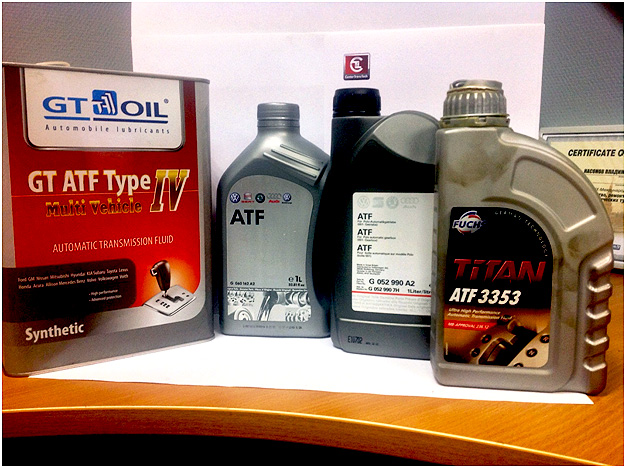
International standards that have not yet been canceled by anyone, as well as the experience of car owners, say that it is necessary to do a complete fluid change approximately every 50-100 thousand kilometers or once a year. It is during this period that automatic transmission oil begins to lose its performance properties.
Many sources refer to the fluid in the transmission as oil. But, despite its physical qualities, transmission fluid cannot be called a full-fledged oil.
So what do you put in the gearbox ? This is a rather complex automatic transmission fluid component in its chemical composition, with the abbreviation ATF.
If technical oil is essentially intended to lubricate the metal elements of the unit interacting with each other, then transmission fluid (ATF) performs a lot of other functions and is designed to work under more severe conditions.
“Transmission” is a connecting link between the gearbox and the engine, serving to transmit torque. The fluid also transfers pressure to the clutch clutches, thereby changing gears.
In addition, it ensures heat removal from the automatic transmission into the atmosphere, and operates at temperatures prohibitive for oils. At the same time, a specially selected composition of automatic transmission additives protects it from foaming and oxidation.
Therefore, it is unacceptable to use any other liquids (especially technical oils) other than those declared for use by the car manufacturer.
- How to choose automatic transmission oil?
How to change automatic transmission fluid
If the gearbox is serviceable, then the answer is simple: follow the operating instructions. But what is poured into the automatic transmission if the unit is maintenance-free? This refers to an automatic transmission, where the manufacturer writes on the plug itself “does not need to be replaced”, there is no dipstick, and access to the filter is extremely difficult.
- How often do you need to change the automatic transmission oil?
Cars equipped with such units, as manufacturers imply, will be used no longer than the estimated service life of the fluid, approximately 200 thousand km. But it’s no secret that some cars travel on Russian roads for two, three, or more times. Therefore, in any case, the fluid needs to be changed. The moment of replacement will be indicated by jerks during gear shifts and extraneous noises.
The optimal way to change the oil in an automatic transmission (let’s not deviate from tradition and change the name, this is not important) on such boxes is hardware. That is, a complete oil change using the substitution method, using special equipment.
The device is connected to the fluid circulation circuit in the automatic transmission at the connection points of the pipes. Then, when the engine is running, new fluid is supplied, and the old one is removed. The volumes of incoming and outgoing liquids must be the same.
And at the moment when the emerging liquid acquires the color of a new one, the process is completed.
How to pour fluid into an automatic transmission Chevrolet Cruze 1.6 Video
-Any questions?
-Something is not clear?
Ask us a question!
Source: http://akpphelp.ru/chto_zalivat_v_akpp.html
What kind of oil should I pour into the automatic transmission?
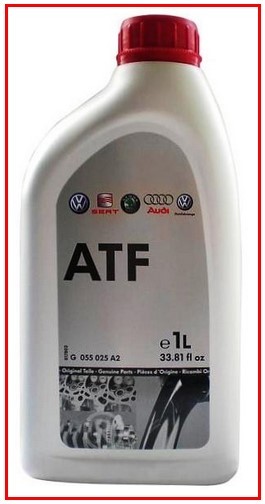
In automatic gearboxes, you can perform a complete or partial replacement of the lubricant.
At the same time, it is important to know what is the best oil to pour into the automatic transmission in order to ensure long-term and uninterrupted operation of the transmission.
The use of lubricant that does not meet the parameters will lead to a deterioration in the performance of the box, and its complete failure is possible.
Content
- 1 A little theory
- 2 Choose wisely
- 3 Conclusion
A little theory
Transmission oil for automatic transmission
Special oils are used for automatic gearboxes. They consist of a base base and additives. The transmission fluid base can be synthetic, semi-synthetic or mineral. The base affects the rate of “aging” of the lubricant during operation.
Synthetic mixtures have the best resistance to very high temperatures. The detergent, antioxidant, anti-corrosion, anti-wear properties of the transmission fluid depend on the components of the additives used in the manufacture of the lubricant mixture.
Mixing different transmission lubricants during a partial replacement is not as critical as in the case of motor fluids, but can also have negative consequences. When mixing lubricants with different viscosities, the viscosity parameters of the lubricant may change.
The viscosity (fluidity) of the oil affects the formation of a protective film on the internal elements of the transmission, heat dissipation, and so on. The higher the viscosity index, the better.
A good automatic transmission oil must have properties that meet the requirements of the car manufacturer. The manufacturer carries out appropriate tests of lubricants and indicates which oil to fill in the automatic transmission.
The automatic transmission is structurally designed in such a way that when the car engine produces more power than is necessary to overcome certain sections of the road, this excess is transferred to internal oil friction. If the lubricant is of poor quality, it will begin to heat up, which contributes to oxidation processes and corrosion inside the automatic transmission.
High-quality lubricants withstand high temperature changes and do not boil, ensuring high transmission efficiency.
A good oil should perform the following functions:
- reducing the friction force in friction units;
- transmission of torque from the car engine to the automatic transmission;
- promoting optimal operation of the gearbox control hydraulic system;
- anti-corrosion properties;
- cooling of transmission mechanisms.
We recommend watching a video about what kind of oil to pour inside the automatic transmission:
We select carefully
Adding lubricant to the automatic transmission
There are several ways to find out what kind of oil needs to be poured into the automatic transmission:
- Using the vehicle's operating instructions. This documentation describes in detail the parameters of lubricants and approximately indicates the amount of lubricant required during replacement. If you don’t have a car manual, you can use the Internet to search for the information you need.
- You can also find the necessary parameters of the transmission mixture by looking at the plate located under the hood of the car or by examining the automatic transmission dipstick. Most manufacturers indicate the required lubricant in these places.
- Buy a transmission fluid manufacturer's catalog and select the oil for the automatic transmission based on the car make.
Original lubricants for automatic transmissions are manufactured by a specific manufacturer, for example, for Mercedes cars it is better to fill in ATF Mercedes transmission fluids, and for BMWs it is better to use ZF mixtures.
It is quite difficult to select similar lubricants; you need to look for the approvals of the car manufacturer or understand the main parameters of the oils and find an alternative lubricant that meets the recommended parameters.
The most well-known brands of transmission mixtures are Dexron, Mercon and Type F. Ford uses its own classification, Ford New Mercon. For hydromechanical transmissions in the European Union, the ZF TE-ML system is used.
There are universal oils for OEM automatic transmissions; they are produced to order from automobile brands. Such mixtures, for example, include Honda - Z1 and DW-1, Nissan - Matic D, J, K and Matic S, Subaru - Subaru ATF, ATF-HP.
Obviously, the choice of transmission mixture depends on the mechanism developer and the specific car model.
Conclusion
It is necessary to fill the automatic transmission with oil taking into account the recommendations of the car manufacturer. Don't buy lubricants based on color: gear oils come in a wide range of colors. The color of the liquid is an indicator of leakage and does not affect the properties of the lubricant.
There are controversial opinions regarding the interchangeability of oils for automatic transmissions. Some car enthusiasts believe that if the manufacturer recommends Dexron III, then you should not use lubricants of lower quality, for example, Dexron II.
Their opponents believe that the first type of lubricant is an improved version of Dexron II, therefore these transmission fluids are interchangeable.
From our point of view, you should not experiment; it is better to pour oil recommended by the car manufacturer, since the characteristics of these lubricants are different and it is unknown how the automatic transmission will behave when using a non-recommended mixture.
Source: http://pro-zamenu.ru/transmissiya/kakoe-maslo-lit-v-korobku-avtomat.html
Gearbox oil - what kind to fill in automatic and manual transmissions, classification. — DRIVE2
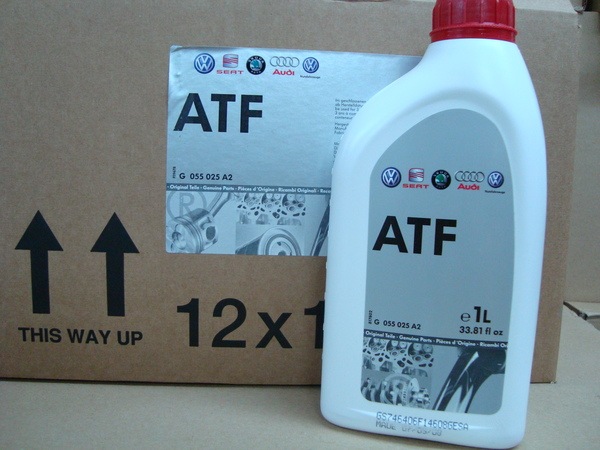
Gearbox oil - what kind to fill in automatic and manual transmissions, classification
Allroader.ru
According to numerous automotive publications, most car enthusiasts know about the existence of transmission oils, but are very poorly versed in their varieties and functional characteristics. A strong statement, but it's true.
In addition, there is confusion regarding the different uses of box oil.
Often, the specified technical fluid is selected using the “scientific poke” method, dooming the components and assemblies of your car to suffer intense wear and premature failure.
When choosing oil for the transmission of their car, many are guided by the opinions and reviews of friends, while the majority almost completely trust the assurances of car dealers or car service specialists.
Not everyone is familiar with the numbers and letters on labels, but this is where information about the purpose of a particular type of motor oil is indicated - at first glance, everything is simple and obvious. So what kind of oil should I put in the box?
It must be borne in mind that not all car parts related to the transmission design require lubrication with oil. Thus, for the transmission of many front-wheel drive cars, experts recommend using motor oil rather than transmission oil.
As for automatic transmissions, they generally require the use of a special fluid (ATF), since traditional oils are not suitable for automatic transmissions due to their high viscosity characteristics.
Types of oils
Based on their chemical composition, transmission oils are usually divided into the following types:
Synthetic, obtained by synthesizing a certain set of chemicals.
Such oils have the highest cost; Semi-synthetic oils are universal fluids containing special additives designed to improve the performance characteristics of the car.
Given the characteristics of semi-synthetic oils, they are often used for drive axles, and are also poured into mechanical transmissions. This type of oil is optimally suited for use in vehicles operating under low temperatures and heavy loads;
Mineral oils represent the most budget-friendly option for a special petroleum product obtained from a mineral base.
Mineral oils do a good job of creating the necessary elastic film on the working surface, which protects parts from foreign substances (dust and dirt), eliminating increased wear of the transmission.
In addition, mineral gear oils are characterized by a good degree of viscosity and resistance to oxidative processes.
Oil viscosity
The SAE abbreviation used in the marking of gear oil and applied to the container label indicates the viscosity index, which is one of the key characteristics of any automobile oil.
A properly selected viscosity index ensures uninterrupted lubrication of the rubbing parts of the gearbox, as well as other parts included in its design.
In this way, an increase in the service life of this important and very expensive unit is achieved, and the efficiency of the entire transmission as a whole increases.
The degree of viscosity of the oil poured into the transmission determines the ability to effectively start the car even in severe frosts, as well as the level of fuel consumption of the engine.
It is very important to choose a fluid with an optimal viscosity, because both high and low viscosity of the oil reduces its lubricating properties.
If the letter W is used in the marking of gear oil, this indicates an all-season use of the fluid. For example, the inscription on a canister of SAE 75W90 oil contains information about the following characteristics:
the number 75 indicates how fluid the liquid remains at subzero temperatures; the number 90 means the viscosity index, which is calculated from the temperature at which the oil is heated to 100°C.
If the oil manufacturer does not put a numerical index in the marking after the letter W, this indicates the possibility of using the liquid in winter conditions. If there is no W symbol in the marking, oil from such a container can only be poured into a box when driving a car in the summer.
It is important to keep in mind that the viscosity index is one of the main criteria that you should pay attention to when choosing gear oil.
A clear example of the importance of the viscosity index is the following comparison.
Thus, synthetic gear oil with the above marking at the time of its cooling to -40°C will have a viscosity index, which is the same as ordinary mineral water cooled to -12°C.
In fact, the viscosity characteristics of the transmission oil appear precisely in the winter.
If the gears of a manual transmission, into which suitable oil is poured, will shift easily and freely even in severe frost, then the “summer” oil in the box will provoke serious resistance to the movement of the gearbox lever even in mild frosts.
Based on the specified characteristics, manufacturers and sellers of transmission oils use the classification of the described technical fluids based on the geographical principle:
oil with a SAE number of 140 or more is ideal for motorists who operate their vehicles in the southern regions of the country; fluids with an SAE mark of about 90 will be optimal for all-season operation in a temperate continental climate zone; the 75W-90 marking means that the gearbox will cope with the task in very severe frosts.
Classification of oils
When choosing an oil designed for lubrication of transmission units, two important parameters should be taken into account:
the degree of load on the mechanism; the intensity of sliding that occurs in the contact teeth.
The listed criteria are the basis for selecting specific additives added to the oil. Experts recommend not to be alarmed by the presence of sulfur compounds included in the additives of a particular oil. Due to their properties, such additives provide such a strong protective effect that the chemical effects of sulfur compounds can simply not be noticed.
As a rule, transmission oils of the GL-4 and GL-5 grades according to the foreign classification are poured into the boxes of modern passenger cars. This classification corresponds to the domestic markings TM-4 and TM-5. Also often used is universal class GL-4/5 oil, which is suitable for various types of gears.
Oil type GL4 is used for the operation of bevel and hypoid gearboxes, as well as for lubrication of drive axle components and mechanisms operating under average maximum loads. As for GL5 type oil, hypoid high-speed gearboxes operate with it, operating under regular high loads and elevated temperatures.
However, the fundamental difference between GL-4 and GL-5 oils is that additives for GL-5 have the highest extreme pressure properties, which is not compatible with the operation of gearbox synchronizers.
The use of GL-5 often causes a loud grinding of the gearbox mechanisms, and subsequently can damage the box.
It is worth remembering that GL-4 oil is intended exclusively for use in the gearbox, while GL-5 is poured into components and assemblies of drive axles.
Failure-free operation of the transmission is one of the main indicators of the reliability of the vehicle as a whole. At the same time, the performance of transmission mechanisms is directly influenced by the specific choice of the car owner, who is faced with the problem of purchasing the most suitable transmission oil for his vehicle.
What kind of oil should I put in the box?
There is an opinion that semi-synthetic liquids have the optimal balance between quality and price. They successfully combine the best characteristics of fluids based on synthetic and mineral bases and stably perform their main functions, guaranteeing stable operation of the transmission at low temperatures, extending the service life of the gearbox.
A number of experts argue that the type of oil - semi-synthetic, mineral or synthetic - is not so important as to put this criterion at the forefront when buying oil. The main indicators when choosing a lubricant will be the oil viscosity index and the properties of the additives included.
In any case, it is necessary to realize that the duration and reliability of the transmission directly depends on how effective the effect of transmission oil on the lubricated parts and components is.
Information from the site Allroader.ru
Source: https://www.drive2.com/b/472630022075580499/
Test of transmission oils for automatic transmissions - rating of universal fluids for automatic transmissions - magazine Behind the wheel
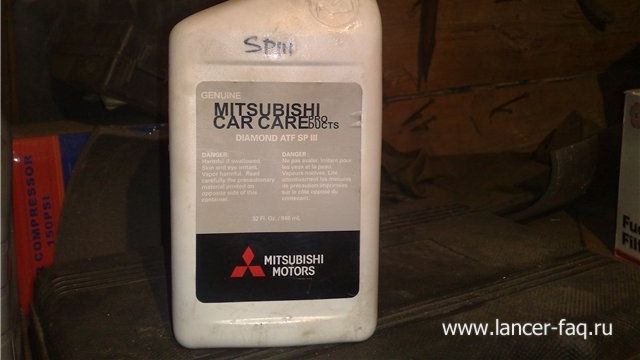
Do I need to change the fluid in an automatic transmission?
If you believe the operating instructions, then in the case of a new car, the “automatic” does not require any maintenance up to a mileage of 100 thousand kilometers.
True, oil skeptics frown: they say that by 40-50 thousand it would be nice to fill in fresh ATF (Automatic Transmission Fluid), suitable for a specific car.
But along with specialized fluids, the so-called “cartoons” are also popular - ATF with the beautiful name Multi-Vehicle (“multi-viikl”, that is, for different cars), which can be poured into almost any automatic transmission, without bothering yourself with searching for a branded one oils
It would seem, why are they needed if you can buy native liquid? The answer is simple: for the secondary. They are taken by those who, already on the second circle of the odometer, are driving an “automatic” and have no idea what and when was poured into it.
In addition, not every warehouse or store keeps in its bins a bottle that is known to be suitable for your AT. Delivery of liquid to order can take a long time - and “toons” meet many tolerances.
So the question here is not at all about price (“toons” are not cheaper), but rather about the speed of solving the problem.
In total, we took eight liquids with the Multi-Vehicle designation for the test. We found the testing of “cartoons” very interesting, because from a technical point of view, creating such a product is very difficult.
It is clear that assessing their versatility in full is an impossible task: the number of requirements, tolerances and specifications for ATF exceeds a hundred (both car manufacturers and gearbox manufacturers are trying).
Therefore, we have combined all kinds of criteria into groups that are closer and more understandable to the consumer.
Microphotographs of the surfaces of identical liners after an identical test cycle show why, other things being equal, the coefficient of friction and wear can differ several times. [1] This is what the surface looks like after working with a leader liquid after 100 thousand loading cycles. [2] And so - with one of the outsiders.
Microphotographs of the surfaces of identical liners after an identical test cycle show why, other things being equal, the coefficient of friction and wear can differ several times. [1] This is what the surface looks like after working with a leader liquid after 100 thousand loading cycles. [2] And so - with one of the outsiders.
Microphotographs of the surfaces of identical liners after an identical test cycle show why, other things being equal, the coefficient of friction and wear can differ several times. [1] This is what the surface looks like after working with a leader liquid after 100 thousand loading cycles. [2] And so - with one of the outsiders.
These are the parameters by which we will check them.
1. Friction losses in the gearbox. I wonder if the driver will feel the difference or not?
2. The influence of fluid on the efficiency of transferring energy flow from the engine to the transmission. Dynamics and fuel consumption depend on this.
3. Cold start.
4. Protective properties of the liquid. Based on the rate of wear of the friction pairs, we will estimate the proximity of repair or, God forbid, replacement of the box.
How to check
We measured the main physical and chemical indicators - viscosity and viscosity index, flash point and pour point - in a certified laboratory. Friction and wear losses were assessed using a friction machine, a device that simulates the operating conditions of various friction pairs.
The tests were carried out in two stages. At the first, a model similar to a gear was studied. At the second stage, operating conditions in bearings were simulated. At the same time, friction coefficients, oil heating, and wear of friction pairs were measured.
Wear was determined by accurately weighing the parts before and after the test cycle, and for the bearing model - also by the hole method.
This is when, before testing, a hole of a fixed size is cut on the working surface of the sample, in the area most susceptible to wear, and at the end of the tests, the change in its diameter is recorded. The more it increases, the higher the wear.
Tests for each fluid at one and the other stages lasted a long time: one hundred thousand load cycles for the bearing model and fifty thousand for the gear model.
Gingerbread distribution
So, let's see what happened. It immediately caught my eye that the effect of the fluid brand on the friction coefficient was very ambiguous. For the gearing model, all differences were within the measurement error limits.
The Dutch NGN Universal ATF looks a little better than others. But for the bearing model everything is different - the range of the measured parameter is quite large. The best performance here is found in Motul Multi ATF and Castrol ATF Multivehicle fluids.
How critical is the difference in this parameter? On the scale of the entire power unit (engine and gearbox), the share of friction losses in the box is not so large (if you do not take into account losses in the torque converter).
But the heating of the oil from friction when operating on different fluids varies much more significantly: the average cumulative difference for the gear and bearing models is approximately 17%.
From the point of view of the temperature effect, this difference is very noticeable - up to 10–15 degrees, which gives a change in the efficiency of the torque converter by a noticeable few percent. Motul synthetics look better than others here. NGN Universal and Totachi Multi-Vehicle ATF fluids are only slightly inferior to it.
Heating a liquid also affects its viscosity: the greater the heating, the lower it is. And with a drop in viscosity, the efficiency of the torque converter decreases. Many people remember problems with the “automatic machines” of not very young “French” cars, when due to the increase in fluid temperature (especially in summer in traffic jams) they refused to work at all!
Go ahead. It is very important that the dependence of viscosity on temperature is as flat as possible. One of the main criteria for this flatness is the viscosity index: the higher it is, the better. The leaders here are Mobil Multi-Vehicle ATF, Motul Multi ATF and Formula Shell Multi-Vehicle ATF. The “cartoon” of the NGN brand was not far behind them.
Let's see how much the viscosity of the liquid in the working area of the box changes, taking into account its heating. The difference is noticeable! For kinematic viscosity it reaches 26%. And the efficiency of “automatic machines” (especially older designs) is quite low and is largely determined by the efficiency of the torque converter - which is precisely what suffers when the viscosity of the working fluid decreases.
The smallest drop in viscosity was found for Motul Multi ATF, Formula Shell Multi-Vehicle and NGN Universal ATF oils. The highest is with Totachi Multi-Vehicle ATF.
These are, of course, comparative results; direct transfer to the efficiency of the box cannot be made.
But for forced engines, in which the load on the automatic transmission components is higher, it is preferable to have fluids with more stable characteristics.
Low-temperature properties were assessed using a combination of several parameters. Obviously, all liquids, including ATF, thicken in the cold. This means that with a significant minus overboard, excessive viscosity will interfere with cranking the engine at the start, since cars with automatic transmissions do not have a clutch pedal.
Therefore, we determined the kinematic viscosity of each sample at three fixed negative temperatures.
In addition, we estimated the temperature at which the kinematic viscosity of the oil will reach a certain fixed value, conventionally accepted as the limit at which it is still possible to “crank” the gearbox.
At the same time, they determined the freezing point: this parameter is included in all descriptions of ATF and indirectly indicates on what basis the liquid is made - synthetic or semi-synthetic.
Synthetics with a high viscosity index again won in this category: Motul Multi ATF, Mobil Multi-Vehicle ATF, NGN Universal ATF, Formula Shell Multi-Vehicle. They also recorded the lowest pour temperatures.
And finally, the protective functions of liquids, that is, their ability to prevent wear. We examined the wear of two models - gearing and sliding bearings, since in a real gearbox the operating conditions of these units differ markedly.
Consequently, the properties of ATF, which reduce wear, must be different and linked to the operation of the torque converter. And here we found a scattering of results.
The leader in minimizing gear wear is Mobil Multi-Vehicle ATF, and in the plain bearing competition, Motul Multi ATF and Totachi Multi-Vehicle ATF won by a wide margin.
TOTAL
If during traditional examinations of gasoline and motor oils we, as a rule, identified only minor differences between one sample and another, here the situation is different. In terms of key parameters, the difference between different ATFs turned out to be significant.
And if you consider that the degree of influence of this complex fluid on power, fuel consumption, and the resource of the box is very noticeable, then you should think about its choice.
Good synthetics with a high viscosity index are the best choice, which will protect your nerves during winter starting in fairly cold weather, and will not create problems after a long stay in a traffic jam under the sultry sun.
The extent to which Multi matches its name will be left to the conscience of its developers. At the very beginning, we noted that it is unrealistic to test in practice every ATF in all the “machines” listed on their labels.
By the way, in the descriptions (with a few exceptions) tolerances are either directly or by default designated by the word meets, that is, “corresponds.” This means that the properties of the liquid are guaranteed by its manufacturer, but there is no confirmation of compliance by the manufacturer of the car or box.
In conclusion, we would like to inform you that if the planned service life of a new car does not exceed 50–70 thousand kilometers (then a replacement is planned), then you read the article in vain - you will not have to change the “liquid clutch”. In other cases, the information we have obtained should be useful.
Adding up the results obtained in all tests, we found that the best products were Motul and Mobil, with Formula Shell liquid lagging behind slightly.
Our comments on each drug are in the photo captions.
What should the atf fluid be?
There is no more complex and controversial device in a car transmission than an automatic transmission. It combines two units - a torque converter, which ensures a continuous flow of energy from the engine to the wheels, and a planetary gear change mechanism.
A torque converter is essentially two coaxial wheels: a pump wheel and a turbine wheel. There is no direct contact between them: the connection is carried out by fluid flow.
The efficiency of this device will depend on a lot of parameters - the design of the wheels, the gaps between them, leaks... And of course, on the properties of the liquid located between the wheels.
It acts as a kind of liquid clutch.
What should its viscosity be? Too much will increase friction losses in the box - a fair amount of power will be consumed and fuel consumption will increase. In addition, the car will become noticeably slow in the cold.
Too low a viscosity will dramatically reduce the efficiency of energy transfer in the torque converter and increase leakage, which will also reduce the efficiency of the unit.
In addition, the viscosity of a liquid increases greatly in cold weather, and decreases with increasing temperature - the difference can be two orders of magnitude! The liquid can also foam and contribute to corrosion of box parts. It is desirable that the liquid retains its properties for a long time: then you can not look into the box for years.
That's not all. The same fluid must work in the torque converter, in the planetary mechanism, and in the bearings of the box, although the tasks and operating conditions in these mechanisms differ sharply.
In the gearing, it is necessary to prevent scuffing and wear, effectively lubricate the bearings and at the same time not interfere with their work with excessive viscosity: after all, with increasing viscosity, friction losses increase.
But the efficiency of the torque converter also increases with more viscous fluids.
So many parameters! Consequently, a complex compromise of the properties that the ATF must combine is required.
ATF - LIQUID OR OIL?
The classification classifies ATF as transmission oils, but its purpose is much broader. After all, lubrication of transmission elements - gears and bearings - is not the only (albeit important) function here.
The main thing is that ATF acts as the working fluid of the torque converter.
It is this fluid that transmits the flow of power from the engine to the transmission, therefore the properties of this fluid are very important for the efficiency of the automatic transmission.
ATF passports standardize its viscosity (at operating temperatures and at negative temperatures), as well as its flash point and pour point, and its ability to form foam during operation. After all, it is viscosity that ensures lubrication and, therefore, the performance of gears and bearings, and the efficiency of transmitting torque from the engine to the transmission.
What are the problems?
ATF fluids are very capricious. Modern ATF may not always suit an old machine of the same brand.
The same applies to interchangeability: say, an “automatic” from a “Japanese” in 2006 on a specialized ATF, addressed to a modern “German”, may become bad... Lubricating the gears and bearings will be such a hassle, but the torque converter may be offended and go on strike. Therefore, each automatic transmission manufacturer is looking for its own solution to the problem. And the more difficult it is to make a universal “cartoon” that suits everyone.
Photo gallery
Oil for automatic transmissions: examination of 8 automatic transmission fluids
Error in the text? Select it with your mouse! And press: Ctrl + Enter
Source: https://www.zr.ru/content/articles/708126-test-8-zhidkostej-dlya-akp/


